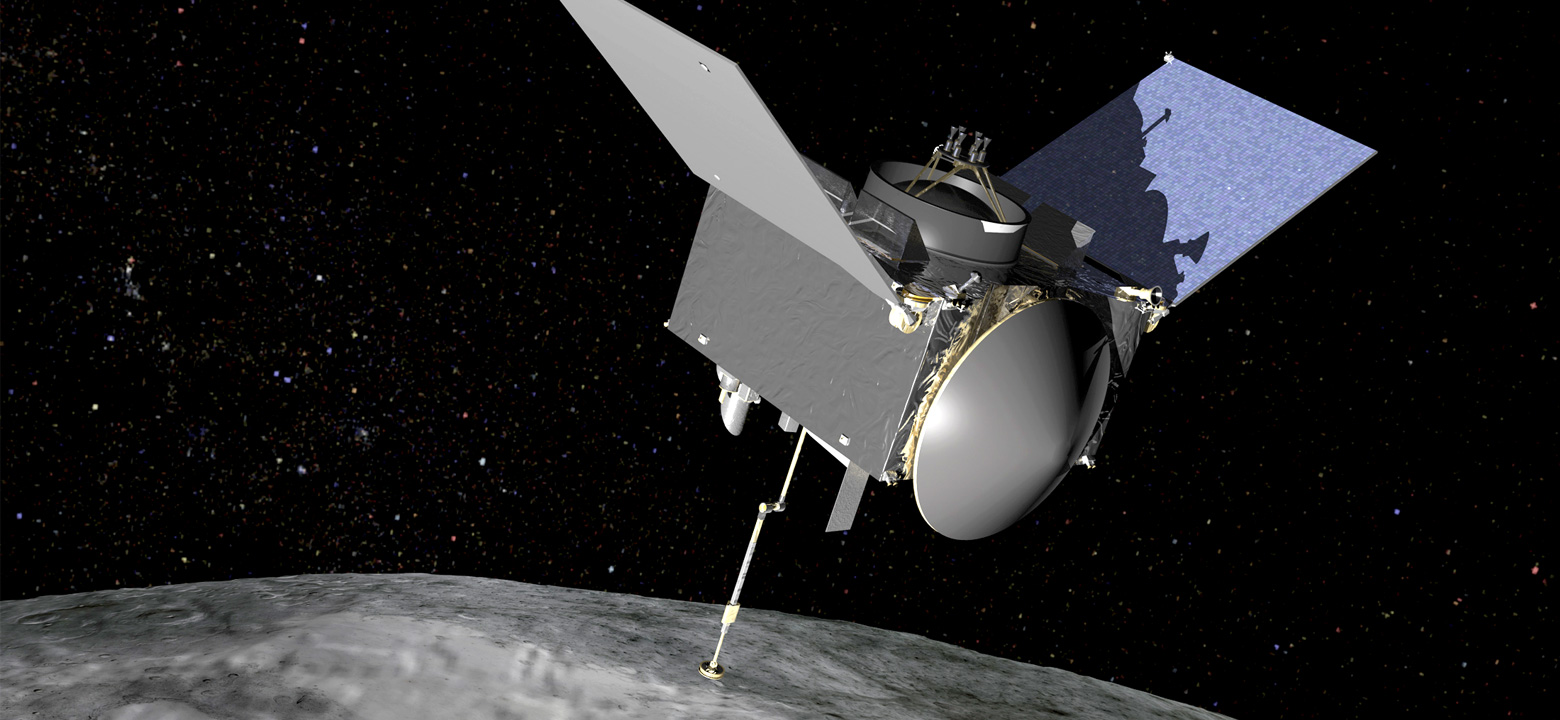
A NASA spacecraft recently landed on a near-Earth asteroid Bennu for the purpose of collecting a sample of debris for researchers to analyze. While a handful of space dust may not sound like much, this mission represents a significant scientific development and the culmination of years of planning.
The mission began as far back as 2004, when scientists initially floated the idea of landing on an asteroid. Twelve years later, on September 8th 2016, the OSIRIS-REx mission launched toward its destination—Bennu, a nearby asteroid. The mission has multiple objectives:
Obtain and return with a sample of the asteroid.
Document information about the sample site.
Document information about Bennu.
Take measurements of its orbit deviation.
Compare its observations in space to observations made on Earth.
The spacecraft reached Bennu on December 3rd, 2018, and spent two years orbiting it, taking measurements, documenting its topography, minerology, and chemistry, and selecting the best sampling site. On Tuesday, October 20th, the craft successfully obtained a sample of the asteroid itself.
Bennu is a pretty unique entity. It comprises rubble, including substances similar to what may have been the precursors to life on Earth, that came together in the wake of a collision very long ago. Scientists hope that getting a sample of it will give them a look into our solar system's past.
In the past, getting samples from asteroids was next to impossible. The only way for researchers to obtain any was to wait for pieces of them to fall to Earth, hope that they weren't completely burned up in the process, and hurry to get samples before wind and rain eroded their distinguishing features. Unfortunately, a lot of valuable material just can't survive entering the Earth's atmosphere, so scientists have been limited in what they could study. Landing on and sampling an asteroid in situ gives them the chance to look at minerals and chemical compounds that would normally be changed or lost to the tremendous heat, friction, and impact of falling to Earth.
In addition to Bennu's value as a sampling site, this craft is bringing back the largest sample NASA's managed to obtain since Apollo. This could potentially yield enough material to fuel decades upon decades of research. It could also potentially offer a look farther back in our planet's past than anyone has been able ot look before—back to the very building blocks of planets and of life itself.
Bennu aside, being able to land on an asteroid is a pretty big deal on its own. A lot of hypothetical objectives—including mining asteroids for resources and building a space elevator—hinge on being able to pull off a successful landing. In the future, we may be able to harvest asteroids for rare minerals for use back on Earth, or even for water to provide life support for space stations. One potential way to construct a space elevator involves connecting a strong tether between Earth and a “captive” asteroid. To accomplish this, you have to be able to reach the asteroid first.
Right now, NASA is focusing on getting as much of the sample of Bennu back as possible. If anything, the OSIRIS-REx mission has been a little too successful—images show debris tumbling out of the craft's sampling probe, since the vlume it grabbed prevented its chamber from closing fully. As a result, scientists are working hard to store the sample in the craft's return probe as soon as possible. This will protect it on its return journey, and keep any more of the sample from being lost. If all goes according to plan, the sample should be safely on Earth in late 2023.
At the moment, Japan's Hayabusa2 is also on its way back to Earth with a precious payload of asteroid Ryugu debris. Unlike the OSIRIS-REx mission, Hayabusa2 will go back into space right after dropping off its samples—this time to 1998 KY26. Samples of Ryugu will offer scientists a look at the asteroid's geological history, and a way to possibly determine which asteroid family it belongs to. While Bennu and Ryugu are both rubble pile asteroids, 1998 Ky26's rotation leads scientists to believe that it's a monolithic object. It also appears to be metallic and rich in water, which could make it a valuable asset for future mining operations.
For the majority of humankind's history, asteroids have been a challenge to study. With no way to obtain a sample short of waiting for a broken-off piece of debris to land on Earth, scientists have been very limited in what information they obtain. NASA's OSIRIS-REx mission represents a significant advancement in the study of near-Earth objects, asteroids, and our solar system itself. Analyzing its carbonate compounds and unique minerology may provide insight that can't be obtained any other way.